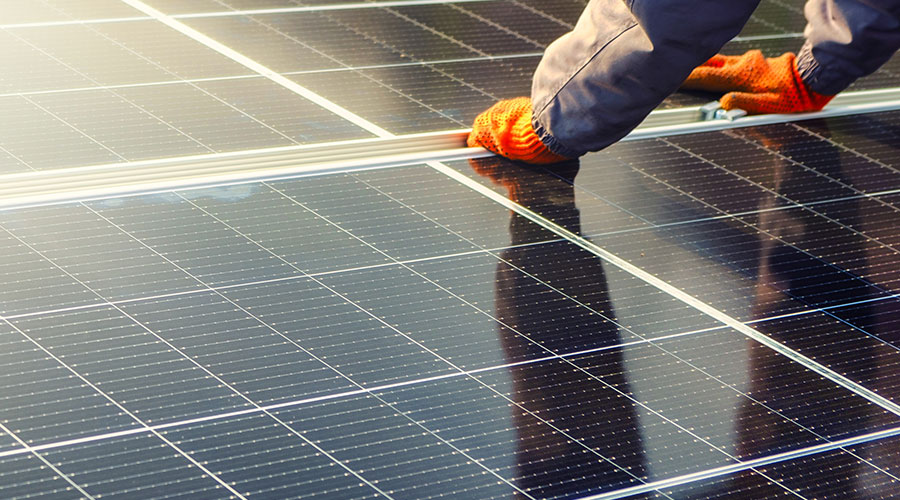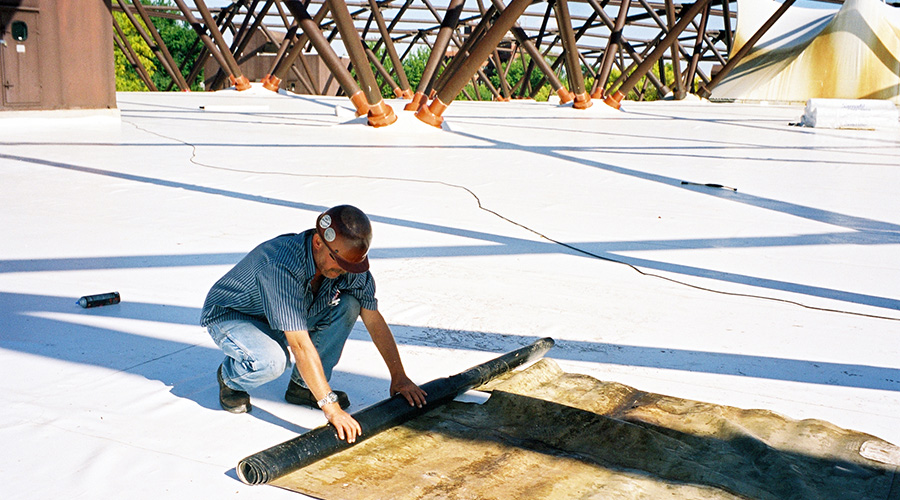Moisture Inspections Require Alternative Testing Methods
Thermal imaging alone cannot verify the presence of moisture or the leak's location. Technicians will have to use an alternative test method, such as a moisture meter or a destructive core sample, to confirm the problem. Infrared also cannot find the exact penetration on the roof surface.
Instead, it can locate the affected area as defined by the thermal signature seen in the camera. Even with these limitations, an infrared camera still can quickly scan an entire roof for thermal anomalies that indicate possible moisture. But to do so effectively requires the right conditions. Bright, sunny days and clear, calm, cool nights are best conditions for conducting a thermal roof inspection. Any ballast or flood coat on the surface must be dry.
Once the timing and conditions are right, managers can opt for one of two types of inspections: capacitance or conduction surveys.
A capacitance-based survey uses thermal imaging to detect possible moisture due to differences in thermal capacitance between wet and dry insulation in a low-slope roof. Technicians typically perform this test in warm weather. It relies on the sun and a clear, night sky to create the right conditions. As the sun heats a roof during the day, the surface and the insulating materials beneath it absorb energy. Wet insulation has a higher thermal capacitance than dry insulation, so it absorbs and retains more thermal energy throughout the day.
Once the sun sets and the roof's surface begins to cool via radiational losses, surface areas with dry insulation underneath cool off quickly because less heat is present in this material. Wet insulation has a higher thermal capacitance, so it takes longer to cool because more energy needs to be released for the temperature to change. If conditions are right, areas that are apparently wet stay warmer longer after sunset.
A conduction-based survey — typically done in cold weather but possible throughout the year — requires a difference between the indoor and outdoor building temperatures. Wet insulation has a higher thermal conductivity than dry insulation. When the inside of the building is warmer than the air outside, wet insulation transfers more heat out of the building than dry insulation.
As a result, any area of wet insulation appears warmer on the roof surface in cold weather when viewed from the outside. If the temperature difference is reversed, one would look for cold spots instead, indicating a greater amount of thermal energy entering the building at that location.
Although any quantity of trapped moisture in a low-slope roof system can be damaging, the technique works best for insulations that are more absorbent, such as wood fiber, mineral board, and fiberglass. With absorbent insulation, the entire board soaks up water, which can render a far more recognizable and easier to detect thermal pattern.
Related Topics:













